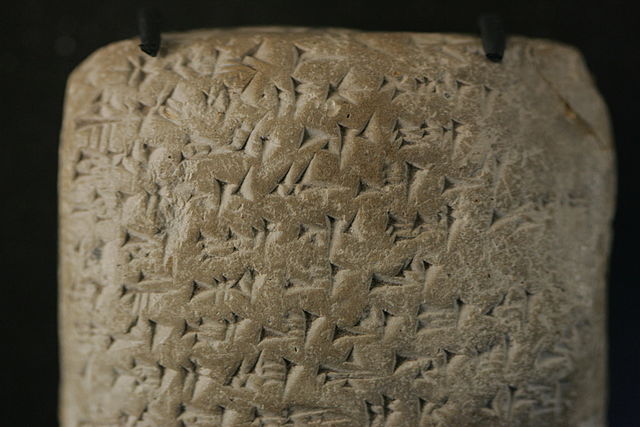Top Qs
Timeline
Chat
Perspective
Giš
Cuneiform sign From Wikipedia, the free encyclopedia
Remove ads
The cuneiform giš sign, (also common for is, iṣ, and iz), is a common, multi-use sign, in the Epic of Gilgamesh, the Amarna letters, and other cuneiform texts. It also has a major usage as a sumerogram, GIŠ, (capital letter (majuscule)) for English language "wood", and is used as a determinative at the beginning of words, for items made of wood. The 12 Chapters (Tablets) of the Epic of Gilgamesh lists 16 named items beginning with "GIŠ".


Amarna letter EA 365-(Reverse), by Biridiya of Magiddo, title: "Furnishing Corvee Workers";[1]
(Very high resolution expandable photo.)
Wikimedia Commons has media related to Giš (cuneiform).
For giš/(is/iz/iṣ) in the construction of words it is used syllabically for giš, and syllabically for the three other constructs; also for eṣ/ez. Besides "giš", it can alphabetically be used for: e, i, s, ṣ, or z.
Remove ads
Epic of Gilgamesh sign usage
The usage numbers for giš in the Epic of Gilgamesh are as follows:[2] eṣ-(2) times, ez, (3), giš, (1), is, (46), iṣ, (77), iz, (17), and GIŠ (355) times.
Epic words with determinative GIŠ
The following list of Akkadian language words are from the sumerograms used in the Epic of Gilgamesh.[3]
|
|
Remove ads
References
Wikiwand - on
Seamless Wikipedia browsing. On steroids.
Remove ads
